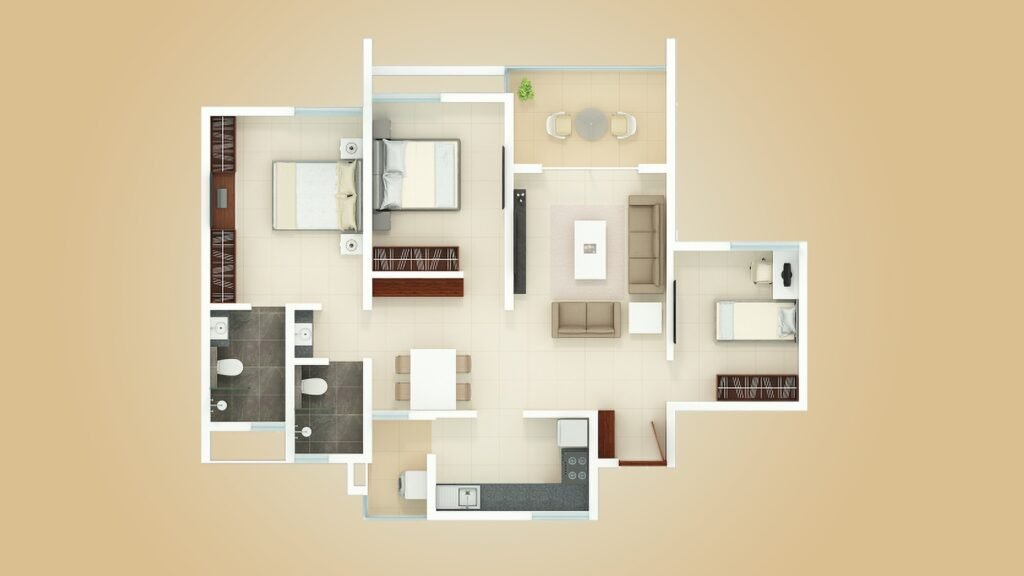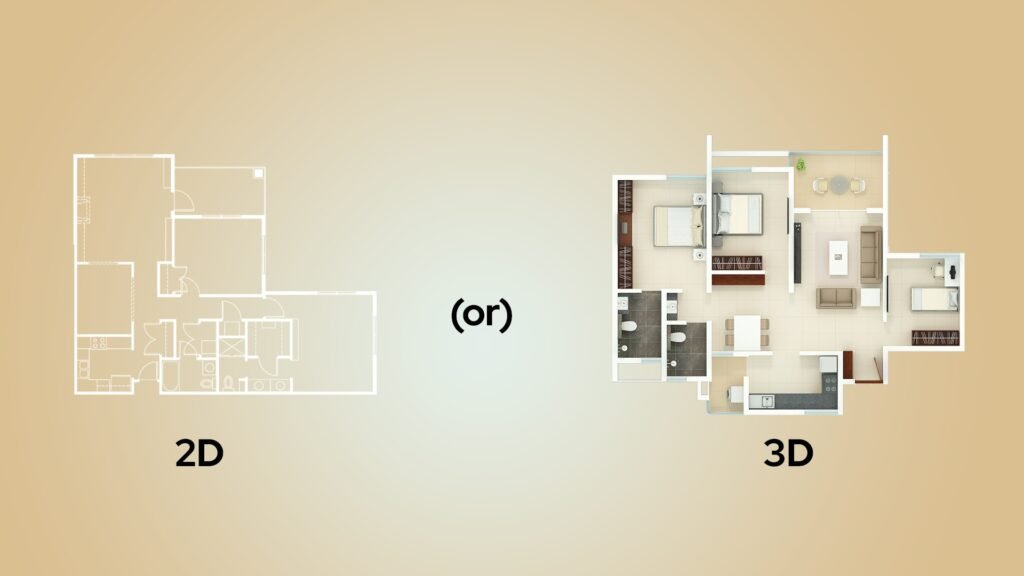Having an attractive floor plan is crucial when advertising residential or commercial real estate. Potential buyers can better picture themselves living in the property by getting a sense of the layout and flow of the space. How do you know which floor plan type is most effective for real estate marketing, though, with so many different types of floor plans available? Let’s take a closer look at the effectiveness of 2D versus 3D floor plans.
2D Floor Plans

It’s safe to say that 2D floor plans have had the longest and widest run as the standard and most common type of floor plan. They are a flat, two-dimensional representation of the property’s layout, outlining things like walls, doors, and windows. Even though 2D floor plans don’t look as good as 3D models, they are still a useful tool for marketing real estate. There are a few of the following reasons:
- Affordability: The fact that 2D floor plans are typically less expensive to produce than 3D floor plans is great news for those on a tight budget.
- Familiarity: Many people are already familiar with and find 2D floor plans easy to understand because they have been around for a while.
- Quick Turnaround: Real estate agents can get 2D floor plans in front of potential buyers more quickly than Architectural Layouts in Three Dimensions
3D Floor Plans

On the other hand, 3D floor plans provide a more engaging and interactive experience for potential buyers. They offer a three-dimensional view of the property’s space, allowing buyers to see the space from various perspectives and get a better sense of the overall flow. The following are a few reasons why 3D floor plans may be useful:
- Realistic Visuals: 3D floor plans offer realistic visuals that can help buyers visualize themselves in the space more effectively. Those who have trouble visualizing a 3D space from a 2D drawing may find this especially useful.
- Interactive Experience: Buyers can “walk through” the property virtually to get a better sense of the overall layout thanks to the interactive 3D floor plans. Buyers from out of town who can’t physically inspect the property can benefit greatly from this.
- Competitive Edge: The use of 3D floor plans, which are still in their infancy in the real estate market, can provide real estate agents with a competitive advantage. They’re a great way to show potential buyers that you’re different from other agents in the industry and willing to go the extra mile for them.
Which Is More Powerful, and Why?

For real estate marketing, which type of floor plan is more effective? It really depends on your individual requirements and financial situation. You might want to consider 2D floor plans if money is tight. Many buyers are already accustomed to seeing them, and they are both affordable and familiar. If you prefer a more interactive and immersive experience, however, 3D floor plans may be the way to go. Buyers can better visualize themselves in the space by using them, which offer a more photorealistic view of the property.
In the end, the most important thing is to choose a floor plan that does the property justice and lets potential buyers picture themselves living there. The purpose of developing a floor plan, whether it’s 2D or 3D, is to present the property in the best light possible and make it as easy to understand as possible.








